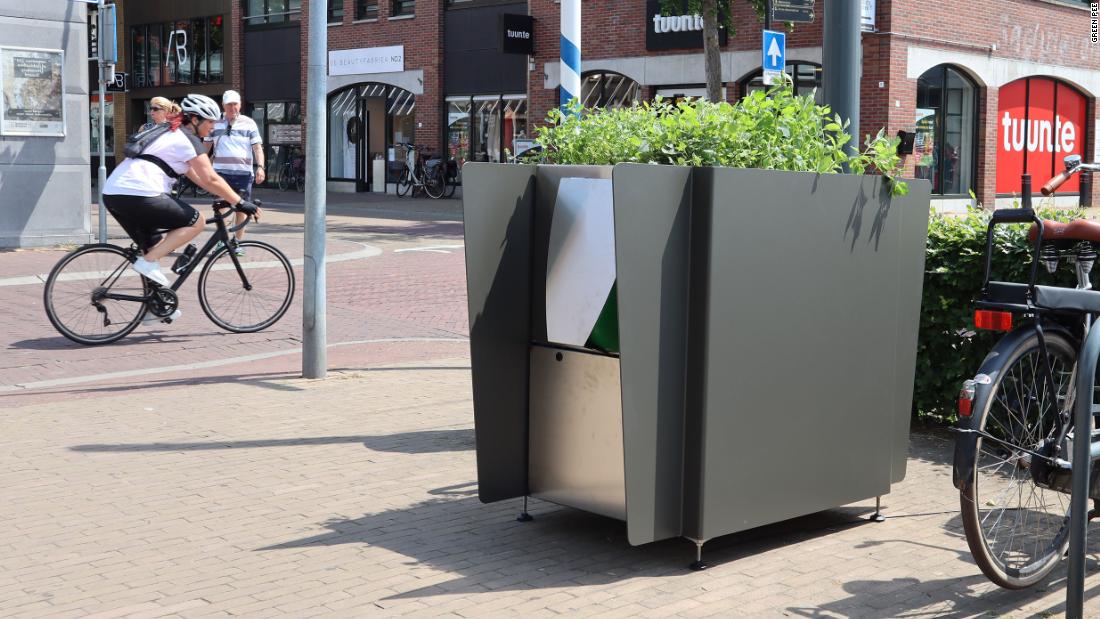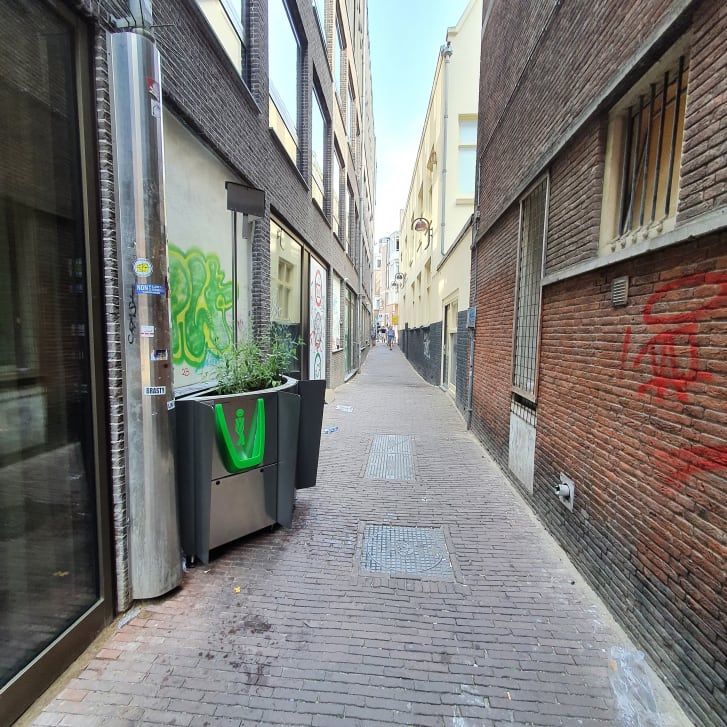The city of Amsterdam is going green in an attempt to combat an age-old problem — public urination.
The local council has installed twelve hemp-filled, sustainable urinals in the city’s “public peeing” hotspots. Dutch company GreenPee has installed twelve hemp-filled sustainable urinals in Amsterdam to combat an increase in people urinating in the streets after the coronavirus lockdown ended.
At first glance, the urinals — called GreenPees — look like traditional planters, with greenery sprouting from the top. But look more closely and you’ll notice an opening in the side. This is the target zone for urination.
GreenPee is manufactured by Dutch company Urban Senses, and there are now a total of 12 of the urinals in Amsterdam, inventor Richard de Vries said.

The urinals produce organic fertilizer and clean water
De Vries, an environmental psychologist by trade, worked with the council on a pilot project back in 2018, installing GreenPees in four popular public urination areas in the center of the city.”The result was there was a 50% reduction in wild peeing,” said De Vries. “It was a great success.”
Encouraged by the results of the trial, officials went ahead and ordered eight new GreenPees, which were scheduled for delivery in February. But then the coronavirus pandemic saw Amsterdam lock down and there was less demand for public toilet facilities.
Around three weeks ago, however, the city started opening up again, with bars welcoming guests and tourists returning.”There was more need for toilets,” said De Vries.

De Vries hopes to take his invention to other countries. Credit: Green PeeThe GreenPees have many benefits, according to De Vries, from protecting historical buildings from the corrosive effects of urine, to reducing water use compared with traditional toilets.
The planters also effectively green the city, attracting bees and other insects, he added.
And all that urine doesn’t go to waste. GreenPee produces organic fertilizer and water, which can be used to feed and water the city’s green spaces, says De Vries.”It looks great but it’s also functional,” he said.
Operators can check the GreenPee manually to see when it needs to be emptied, or use a smart sensor that will send an alert, according to the company website.
De Vries has already installed GreenPees in the Dutch cities of Vlaardingen and Beekbergen, and the Belgian cities of Mechelen and Genk.
Next, he wants to see if he can take the concept to other countries, as well as researching how to generate electricity when someone pees into the GreenPee.